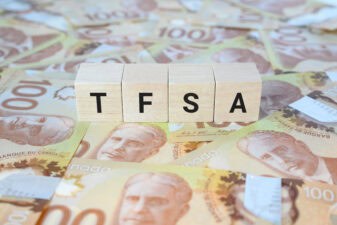High debt levels in the real estate sector haven’t been a worrying factor during the nearly zero interest rate regime of the past few years after the global financial crisis, but if the Bank of Canada keeps increasing short-term rates over the coming year, highly levered REITs could be severely affected financially.
Some trusts may have to cut their distributions, as rising interest rates increase their financing costs and erode portions of distributable cash flows, and the impact may be more significant for the highly leveraged operators.
A general move by several REIT management teams locally to gradually lower gross indebtedness has been underway over the past few quarters. Three diversified REITs achieved the lowest debt-to-gross-book-value ratios as of the end of the third quarter of 2018.
Morguard REIT (TSX:MRT.UN)
Morguard holds a diversified portfolio of 48 retail, industrial, and office properties across Canada. The trust had one of the lowest debt ratios among diversified REITs in the country at 44.70% as of September 30 this year, implying a lower interest rate risk should rates continue to rise next year.
The trust’s total portfolio occupancy rate has held steadily at 94% so far this year, but this rate is slightly lower than the 96% recorded at the end of 2016 due to marginal weaknesses in the office and retail asset portfolios.
The REIT has experienced a weak 2018, as total net operating income (NOI) from all three segments has declined marginally over the first nine months of the year. Same property NOI declined by 5.1% so far this year, while the adjusted funds from operations (AFFO) payout rate crept up to 88.9% for the third quarter from 82.8% in the same period last year.
It’s not all doom and gloom though, as the trust’s robust development program could generate some accretive growth in 2019, but investors haven’t been so pleased with the trust’s financial performance this year, and the units have suffered a 13% loss on a total-return basis.
The yield on the units tops at 8.37% right now due to the deep discount to net asset value (NAV) on the units, but the payout is still well covered. The current scenario of declining occupancy rates needs be monitored for a potential buy on early signs of trend reversal. Watch closely.
H&R REIT (TSX:HR.UN)
H&R is one of the country’s largest diversified REITs with a $6 billion market capitalization. The trust has been busy transforming its business recently through massive U.S. and Canada asset sales, a multi-family residential property acquisition in the United States, and heavy development pipeline investments, while aggressively repurchasing its own units for cancellation.
The trust had a debt-to-gross-book-value ratio of 44% and has been extending the average maturity of its debt and has some good leverage in a rising-rate environment.
A 9.5% decline in funds from operations last quarter was alarming and could threaten the sustainability of the distribution as the trust undergoes restructuring. The units trade at near 15% discount to NAV right now, but the discount could disappear as the reorganization process completes and patient investors could be rewarded with capital gains.
The 6.5% forward yield on the units looks compelling though, but execution uncertainty is currently high.
Firm Capital (TSXV:FCD.UN)
Firm Capital is a fast-growing REIT that has grown its diversified property portfolio by 659% since inception in 2012 and increased its monthly distribution six times over the period, while concurrently increasing the NAV per unit by 46% over its six years of existence.
With a debt ratio of 42.2% as of September 30, 2018, the young REIT had the lowest total leverage going into the fourth quarter, and it announced a 4.3% increase to its monthly distribution to $0.04 a unit, which currently yields 8% on an annual basis. This was a sixth increase in six years.
The steady increase in the REIT’s AFFO payout ratio over the first nine months of 2018 could be concerning, given that the payout ratio reached 114% in the third quarter, but the consolidation of a new acquisition of a 50% interest in a 100% leased Montreal industrial property could provide some new free funds to meet the increased distribution and dampen the growth in the payout rate.
There is a growth promise here, and the 7.5% yield could be bankable.
 Claim Membership Credit
Claim Membership Credit







